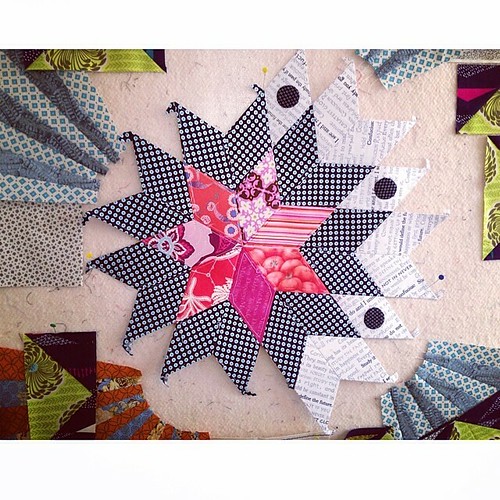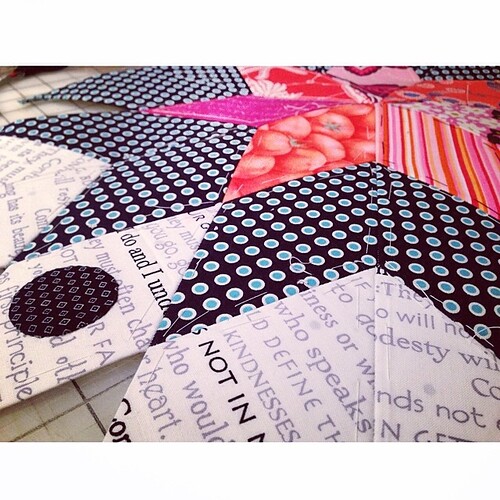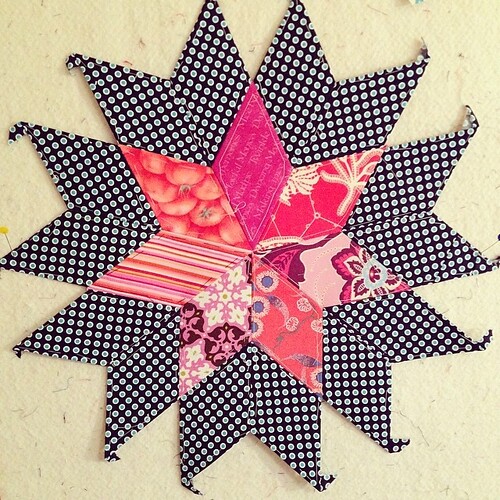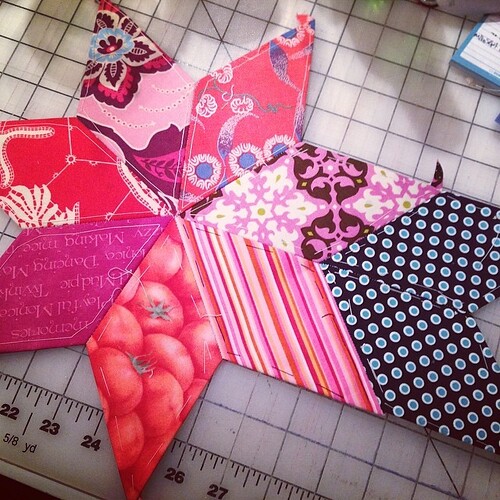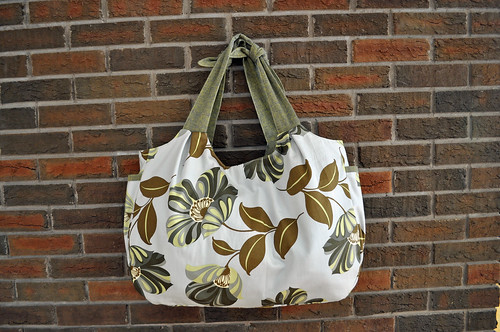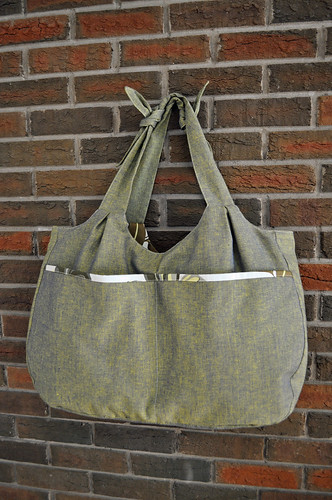Hi! I'm Katrina from
Nizhoni Workshop, the small blog where I share my projects. I'm a mother of three young children and I love to sew and create. My passion is patchwork and I'm a member of the
Calgary Modern Quilt Guild. I love bold pattern on pattern, anything Tula Pink and am currently in love with medallion-style quilts. I enjoy creating designs which incorporate my Navajo heritage and love of modern quilting.
Today I'd like to show you my method of creating a boxed zip pouch. There are many ways to achieve a similar result and I won't be recreating the wheel. This is simply my way of sewing that takes minimal effort to achieve a great result.
The supplies you will need for this tutorial:
Fabric (for this tutorial we will be using Sew Sister's November 2013 Kona Cotton Solids Grouping)
Lightweight Fusible Interfacing
one 14" to 18" zipper
Warm & Natural Batting (or similar)
3" of woven tape or ribbon for tabs (not shown here)
Basic sewing notions and tools
Please start by pressing your fabrics.
Choose one fabric as your lining. Cut a 10" x 11" piece. Cut and fuse a 10 x 11" piece of lightweight fusible interfacing to the wrong side of lining fabric using the fusing instructions for your interfacing. Set aside.
Stack remaining lining fabric with the other three solids, cut strips of random widths using your scissors or rotary cutter. Cut three or four strip stacks.
Randomly choose strips and sew together. Keep sewing together until you are satisfied. Now, try cutting the piece in half and sew back together so you have more of a "rectangular" shape.
Now try adding strips going different directions. Using small bits of color here and there can make it interesting, you could also use small fussy cut pieces of fabric to showcase. However, for this tutorial I am using solids.
Keep adding until your rectangle is a little larger than 10" x 11".
Lay your interfaced lining piece on top of your patchwork and trim patchwork down to size. Using a couple pins helps keep the materials from slipping. Set aside your lining piece again.
Take your patchwork rectangle and lay down on a small piece of Warm and Natural or similar batting. I trim to about 1/2" on each side. You can choose to use basting spray but since this project is so small, it won't be necessary.
Randomly straight stitch up and down and across your patchwork to quilt. You can also free motion quilt if you prefer.
After you are happy with the quilted lines, lay your lining piece back on top, right sides together, of your quilted patchwork and trim to size of lining.
Keeping your zipper closed, lay zipper facing down on top of the quilted patchwork top edge (10" side).
Lay the top edge of the lining, interfacing (wrong) side up, on top of the zipper and patchwork piece. Pin at ends and once in the middle at least. I also like to use a JEANS needle in my machine because these layers are bulky and I hate finding skipped stitches. Using a zipper foot is not necessary as the layers are quite thick and you will hardly notice a difference.
Take your time and sew a 1/4" seam. Remove pins as you sew.
Open your seam and press open. Be careful not to melt your zipper.
Top stitch close to the edge, about an 1/8th of an inch away.
Now fold over the quilted patchwork layer so right sides are facing each other, fold the lining to the back, right sides facing each other. Align all edges to the top of the zipper.
Pin on the ends first so the edges are aligned. Pin middle area.
Sew a 1/4" seam, removing pins as you go.
Open zipper and open seam and press carefully. Top stitch and 1/8" away from edge like the other side.
Close the zipper (lining facing out) and use a pin to hold place and make with a water soluble marking pen or chalk. Or finger press. Do the same for both sides.
Lay your zipped bag so the zipper pull is on your left side, we will work with the right side (with the zipper stop) first. Take your woven tape or ribbon and cut to 1.5" length and fold in half. Center the tape on the mark and pin.
Make sure the cut edges are aligned with the edge of the bag. Stitch in place 1/8" away from the raw edge.
Align the mark over the top of the zipper and pin along the edge. (Make sure that the first side you sew is the side WITHOUT the zipper pull)
Sew a 1/4" seam along the pinned edge. When you sew across the top of the zipper go very slowly and back stitch a couple times. Cut off the excess zipper. Zigzag your raw edges so they are nice and neat.
Now, working on the other side, slightly pull the zipper open.
Holding the zipper as closed as possible, stitch SLOWLY back and forth across the zipper about 1/8" away from the raw edge of the bag.
Trim the excess zipper end. Repeat the steps for attaching the woven tape again for this side. OPEN your zipper now. Align the zipper over the middle of the tape and pin. Before you stitch the seam, please ensure the zipper is open. Sew the seam as you did for the other side.
Here is your pouch! Now to box the sides.
Using a temporary marking pen or chalk, carefully mark about 1.5" from the edge along the folded crease for all sides of the bag.
Open one side of the box like the photo below. Align the pin on the front with the mark you made on the back.
Using a cutting mat or ruler, align the point of the triangle like the photo below shows. The line I drew with the marking pen is 2" long.
Sew on the marked line back stitch at beginning and end. Trim excess fabric about 1/4" away from seam. Zigzag raw edges. Trim threads and remove the temporary marking pen or chalk lines. Repeat for all sides.
Your finished boxed zip pouch! Now turn the right side out.
Finished boxed zip pouch!
Please share your finished project pictures with me, tag me
@khcalgary on Instagram or on
flickr!

